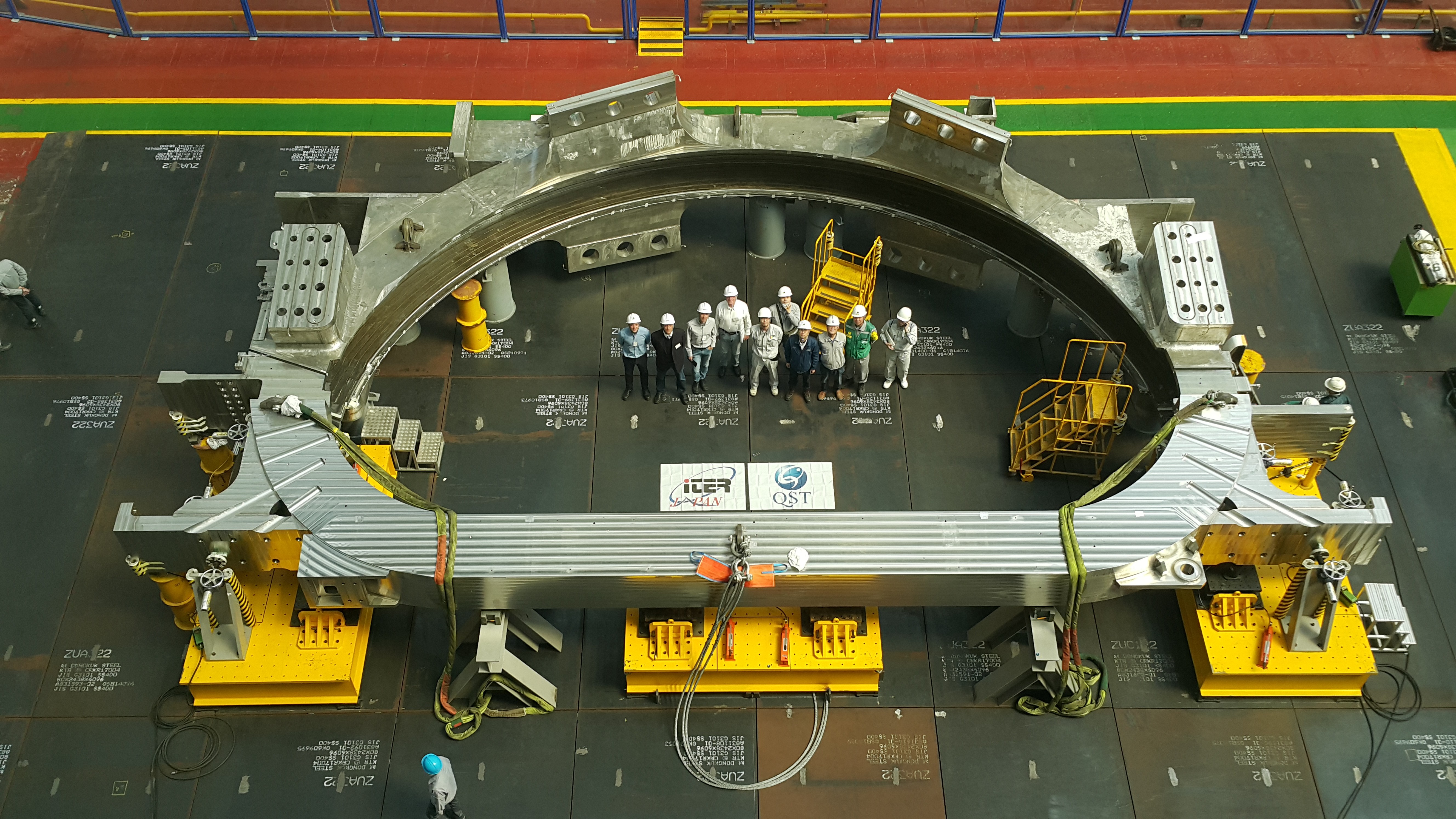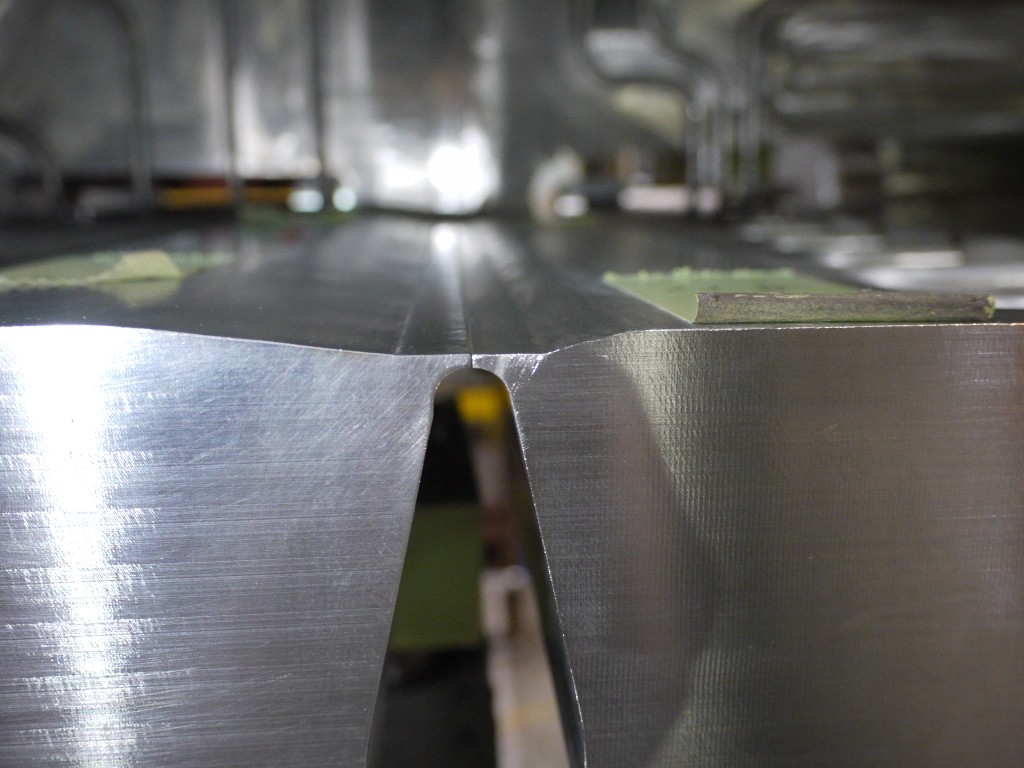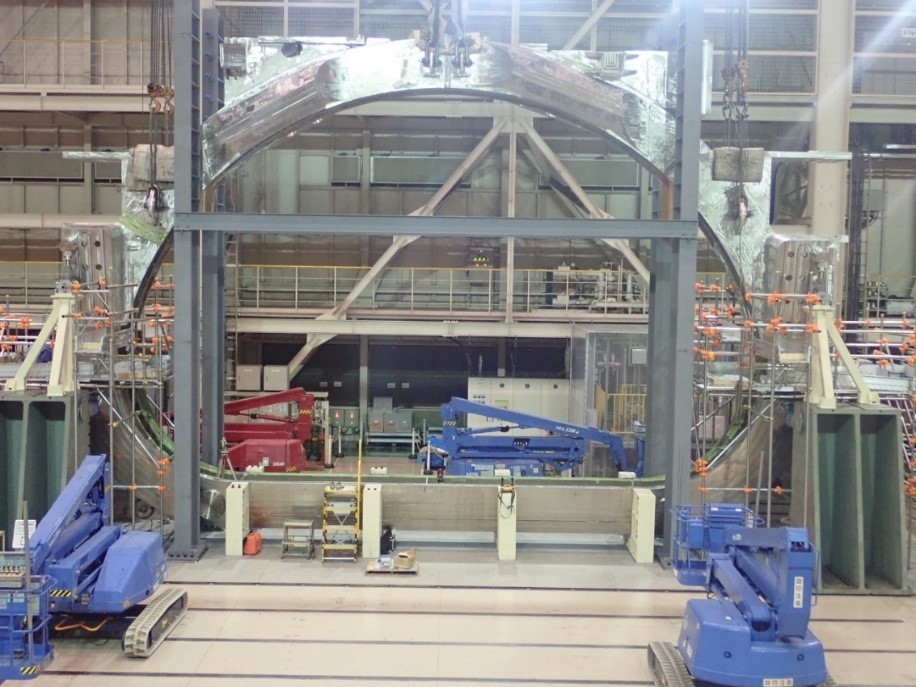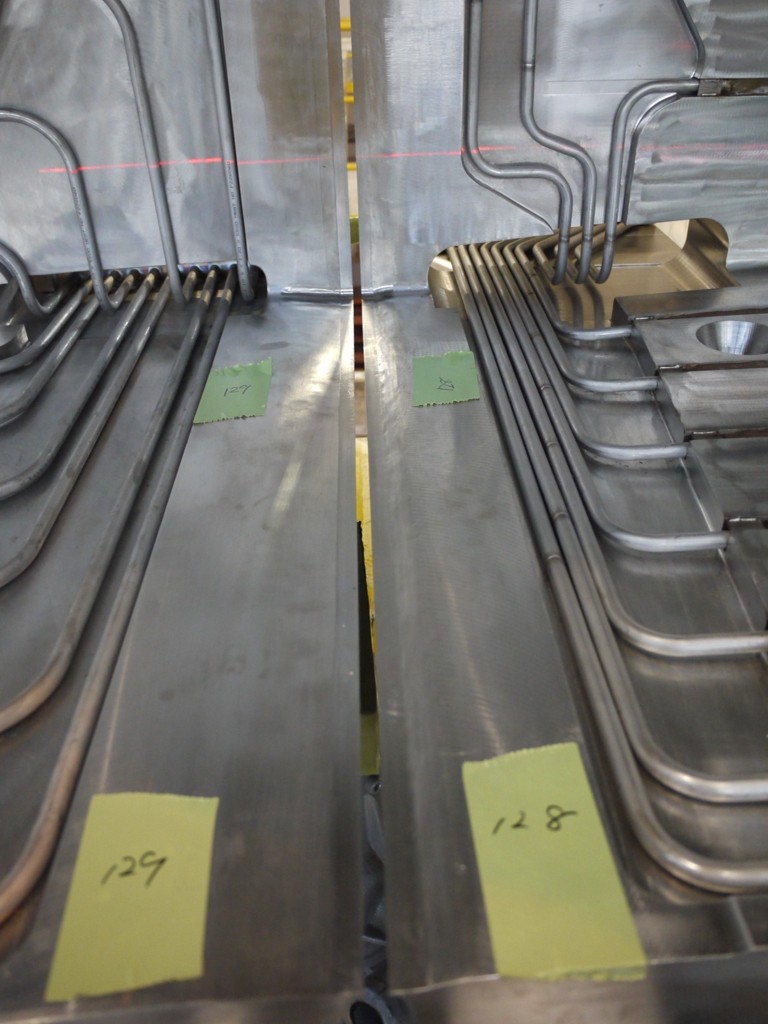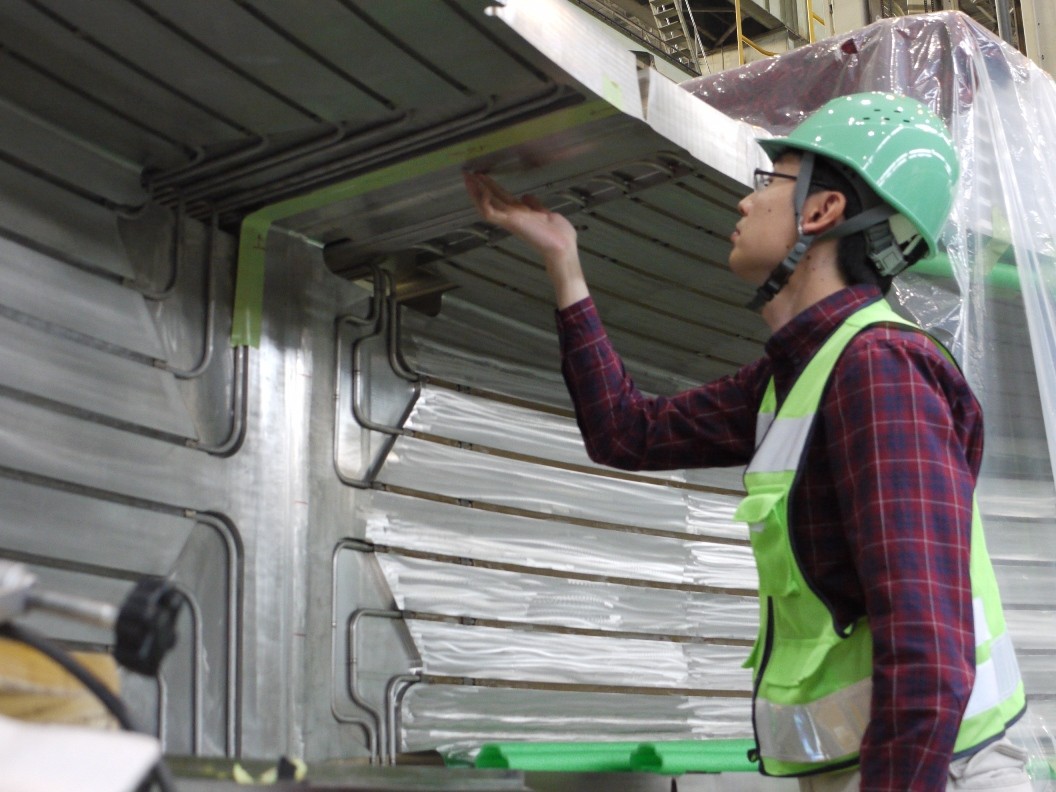First ITER magnet arrives this year
Please see the gallery below for a full update on manufacturing progress.
Eleven years after completing the signatures on documents specifying technical and quality control requirements for the supply of nine toroidal field coils, the Japanese Domestic Agency is overseeing the last, spectacular sequences on its first production unit.
The 200-tonne case assemblies are also in series production. After successful fitting tests early last year, two have been delivered to Europe for insertion activities and a third will arrive this month; another completed production unit will remain at Mitsubishi for the assembly of the Japanese coil that is due at ITER in 2019. The fitting tests are the most delicate stage in the coil case manufacturing process, demonstrating that sub-assemblies manufactured and welded at different factory sites can be successfully paired with gap tolerances as strict as 0.25 to 0.75 mm along 15-metre weld grooves.
Please see the gallery below for a full update on manufacturing progress.




